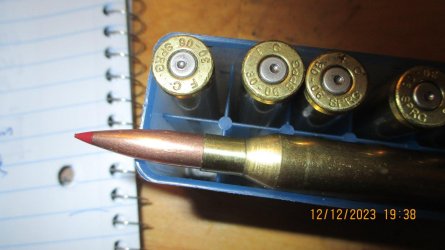They'll also hang fire with 102.5 grains of H1000 in a 30-378. Don't ask me how I know.Yes, most instances of guys blowing up trays of primers have been with federals. (if memory serves)
They are sensitive little guys.
Sure is nice to have all that fire when you need to ignite a difficult powder in large quantities. H50BMG and Retumbo in cheytac cases will hang-fire a CCI-250... but Fed215 and 215M will pop reliably every time.
These days I recommend Fed215M for everything above 75gr of powder, and/or anything slower than H1000. Otherwise I run a steady diet of CCI-200 for up to 45gr capacity and 250 in everything else. Pretty much standardized exclusively on CCI-450's for everything smaller, regardless if I need magnum or not.
-----------
Follow on Instagram
Subscribe on YouTube
Amazon Affiliate

Last edited:

